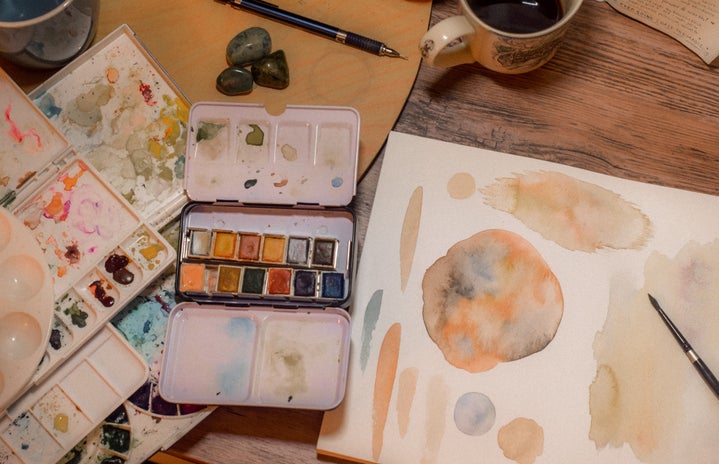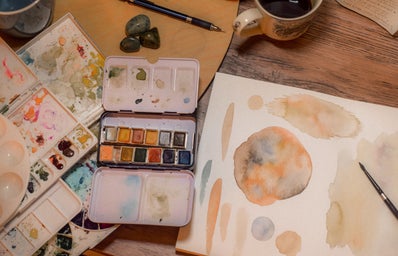So, you want to start a sketchbook. Maybe it’s your first, or maybe you’ve already compiled a stack of completed sketchbooks… wherever you are in your art journey, this article is for you. I don’t claim to be a professional, but after 15 years of drawing, I have learned a thing or two. Here is some knowledge I’ve accumulated over the years.
find the Right sketchbook
There is no one-size-fits-all for a sketchbook. Each artist has unique needs, values, and quirks, and their sketchbook must reflect that. A watercolorist will probably want thicker paper, so as to prevent warping, than an artist who prefers pencil and markers. Now, I could go through and list out the different elements of a sketchbook (what sizes they come in, the material of the paper, the binding, etc.), but what I find more helpful is going through what I personally look for in a sketchbook. Then, you can apply the same selection process to suit your needs.
My sketchbook has to open flat so you can see the entire spread across the two pages. Playing into that, no spiral binding or pages that can be ripped out. Nothing that distracts from the focus – the art. I like a sketchbook that is small, so I can easily put it in my bag or purse and take it for sketching on the go. I also find the process of drawing to be less daunting when I have a smaller page to fill. The paper I’m not too particular about since I don’t often use fussy materials. If I need firmer paper, I can always glue in a thicker sheet. Last, I prefer the cover of the sketchbook to be minimal (just a solid color will do) so I can customize it with my own stickers.
Taking these criteria into consideration, I settled on the Talens Art Creations Sketchbook, 4.7″ x 4.7″, and I love it.
But what should be in my Pencil Case?
It’s up to you. You can forgo the pencil case entirely and carry pens and markers in your hands and pockets if that’s more your style. Me? I like a pencil case. I have too many materials to carry in hand and too much fear that I will lose them if I don’t have a zipped bag to secure them in. What you include in your pencil case is a process of trial and error, seeing what finishes and experiences you like, whether you mind bleeding or shadowing onto other pages, etc. Naturally, your pencil case will fill up. Don’t rush the process.
If you need a head-start, here are my favorite sketchbooking materials:
Take Your Sketchbook Everywhere
A sketchbook is your personal travel companion. Put it in your bag and take it to explore the world with you. There is nothing better than sketching from life. People often say they aren’t inspired or don’t know what to draw. Well, the world is full of references at your disposal. And trust me, sketching in a cafe is so much fun. It sparks the best conversations. So go, the world is your oyster. (You can even tape in artifacts from your travels. After all, sketchbooks are tactile.)
Don’t Worry About Art Style
New artists are often hung up over the concept of an “art style.” They want their art to look a certain way, and they try to engineer their drawings to match. But this is art, not science. No amount of manipulating variables is going to artificially create an art style. It is an organic thing. The more you draw, the more your style will develop, and as you improve, it will change. Hence, don’t worry — just draw.
It doesn’t have to be perfect
Your sketchbook does not have to be perfect. It is for sketching, experimenting, and taking risks. Some pages will be compositional masterpieces, while others can be unfinished or for studies or simply disliked. Don’t let perfection be the thing stopping you from starting. In art, there is no such thing as perfect.
Sketchbooking is a fruitful hobby, producing a book that no one else in the world owns. I love looking through other artists’ sketchbooks and seeing the uniqueness of their talent. If you are considering starting a sketchbook, I can’t encourage you enough. If you are consistent with it, your sketchbook can become an archive of your life, filled with drawings and memories from cover to cover.


